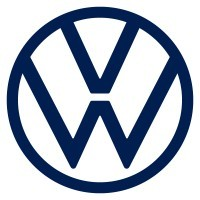Volkswagen's Rocky Road: Navigating Tariffs and Transformation
May 2, 2025, 9:47 pm
Volkswagen is at a crossroads. The German automotive giant, once a symbol of innovation and reliability, is now grappling with a storm of challenges. Layoffs, profit drops, and tariffs are reshaping its landscape. The company has cut around 7,000 jobs since late 2023. This is a significant move, reflecting a broader trend in the automotive industry. The cost-cutting drive is not just a reaction; it’s a necessity.
In the first quarter of 2025, Volkswagen reported a staggering 40.6% drop in net profit. The figure fell to €2.19 billion ($2.49 billion). This decline comes despite a 3% increase in revenue, which reached €77.56 billion. The numbers tell a story of rising costs and shrinking margins. The CFO, Arno Antlitz, emphasized the urgency of implementing cost-saving measures. The company is in a race against time.
The backdrop is fraught with tension. Trade wars and tariffs loom large. U.S. President Donald Trump has imposed a 25% tariff on car imports. This move is designed to bring manufacturing back to American soil. For Volkswagen, it’s a double-edged sword. North America accounted for just over 11% of its vehicle deliveries in the first quarter. The stakes are high.
Volkswagen’s challenges are not limited to tariffs. The company faces increased competition and stricter emissions regulations. The automotive landscape is shifting. Electric vehicles (EVs) are the future, but the transition is rocky. Demand for EVs has been uneven. Consumers are hesitant, caught in a web of economic uncertainty. The pandemic has left scars on household finances.
The company’s outlook for the rest of the year is cautious. Volkswagen expects business to trend towards the lower end of its guidance. The forecast for 2025 remains unchanged, but it does not account for the potential impact of U.S. tariffs. The automotive industry is in a state of flux, and uncertainty reigns supreme.
Volkswagen is not alone in this struggle. Other carmakers are feeling the pinch. General Motors, Mercedes-Benz, and Stellantis have all refrained from providing guidance for the year ahead. The industry is in a precarious position. The recent tariff rowback by Trump offers little relief. While manufacturers can now pay less in import taxes for foreign parts, the underlying issues remain.
The automotive sector is facing a perfect storm. The transition to EVs is a monumental task. Traditional carmakers are battling against cheaper models from Chinese competitors like BYD. The price war is fierce. The challenges are as daunting as navigating a traffic jam at Spaghetti Junction.
Volkswagen’s strategy is evolving. The company has a plant in Tennessee, but most of its U.S. sales come from imports. The question looms: will Volkswagen ramp up manufacturing in the U.S. to sidestep tariffs? The answer is murky. Antlitz noted that it’s too early to make such projections.
The company’s profitability is under siege. Higher manufacturing costs and excess capacity at European factories are weighing heavily. Demand in China, a crucial market, is also faltering. The electric vehicle market is not providing the boost that many had hoped for.
Porsche, Volkswagen’s luxury brand, has also cut its profit outlook. The impact of tariffs and weak EV sales is taking its toll. Other carmakers are following suit, scrapping forecasts altogether. The uncertainty surrounding tariffs is a cloud hanging over the industry.
Volkswagen’s order backlog is a glimmer of hope. The company reported nearly 1 million units in backlog for new models in the first quarter. European demand for these models has been strong. However, this is not enough to offset the broader challenges.
The automotive industry is at a pivotal moment. The transition to electric vehicles is not just a trend; it’s a necessity. But the path is fraught with obstacles. Tariffs, competition, and changing consumer preferences are reshaping the landscape.
Volkswagen must navigate this turbulent sea with skill. The company’s future hinges on its ability to adapt. Cost-cutting measures are a start, but they are not a panacea. The road ahead is long and winding.
In conclusion, Volkswagen is in a battle for its future. The challenges are immense, but so are the opportunities. The company must find a way to thrive in this new environment. The stakes are high, and the clock is ticking. The automotive world is watching closely. Will Volkswagen emerge stronger, or will it be left behind in the dust? Only time will tell.
In the first quarter of 2025, Volkswagen reported a staggering 40.6% drop in net profit. The figure fell to €2.19 billion ($2.49 billion). This decline comes despite a 3% increase in revenue, which reached €77.56 billion. The numbers tell a story of rising costs and shrinking margins. The CFO, Arno Antlitz, emphasized the urgency of implementing cost-saving measures. The company is in a race against time.
The backdrop is fraught with tension. Trade wars and tariffs loom large. U.S. President Donald Trump has imposed a 25% tariff on car imports. This move is designed to bring manufacturing back to American soil. For Volkswagen, it’s a double-edged sword. North America accounted for just over 11% of its vehicle deliveries in the first quarter. The stakes are high.
Volkswagen’s challenges are not limited to tariffs. The company faces increased competition and stricter emissions regulations. The automotive landscape is shifting. Electric vehicles (EVs) are the future, but the transition is rocky. Demand for EVs has been uneven. Consumers are hesitant, caught in a web of economic uncertainty. The pandemic has left scars on household finances.
The company’s outlook for the rest of the year is cautious. Volkswagen expects business to trend towards the lower end of its guidance. The forecast for 2025 remains unchanged, but it does not account for the potential impact of U.S. tariffs. The automotive industry is in a state of flux, and uncertainty reigns supreme.
Volkswagen is not alone in this struggle. Other carmakers are feeling the pinch. General Motors, Mercedes-Benz, and Stellantis have all refrained from providing guidance for the year ahead. The industry is in a precarious position. The recent tariff rowback by Trump offers little relief. While manufacturers can now pay less in import taxes for foreign parts, the underlying issues remain.
The automotive sector is facing a perfect storm. The transition to EVs is a monumental task. Traditional carmakers are battling against cheaper models from Chinese competitors like BYD. The price war is fierce. The challenges are as daunting as navigating a traffic jam at Spaghetti Junction.
Volkswagen’s strategy is evolving. The company has a plant in Tennessee, but most of its U.S. sales come from imports. The question looms: will Volkswagen ramp up manufacturing in the U.S. to sidestep tariffs? The answer is murky. Antlitz noted that it’s too early to make such projections.
The company’s profitability is under siege. Higher manufacturing costs and excess capacity at European factories are weighing heavily. Demand in China, a crucial market, is also faltering. The electric vehicle market is not providing the boost that many had hoped for.
Porsche, Volkswagen’s luxury brand, has also cut its profit outlook. The impact of tariffs and weak EV sales is taking its toll. Other carmakers are following suit, scrapping forecasts altogether. The uncertainty surrounding tariffs is a cloud hanging over the industry.
Volkswagen’s order backlog is a glimmer of hope. The company reported nearly 1 million units in backlog for new models in the first quarter. European demand for these models has been strong. However, this is not enough to offset the broader challenges.
The automotive industry is at a pivotal moment. The transition to electric vehicles is not just a trend; it’s a necessity. But the path is fraught with obstacles. Tariffs, competition, and changing consumer preferences are reshaping the landscape.
Volkswagen must navigate this turbulent sea with skill. The company’s future hinges on its ability to adapt. Cost-cutting measures are a start, but they are not a panacea. The road ahead is long and winding.
In conclusion, Volkswagen is in a battle for its future. The challenges are immense, but so are the opportunities. The company must find a way to thrive in this new environment. The stakes are high, and the clock is ticking. The automotive world is watching closely. Will Volkswagen emerge stronger, or will it be left behind in the dust? Only time will tell.


